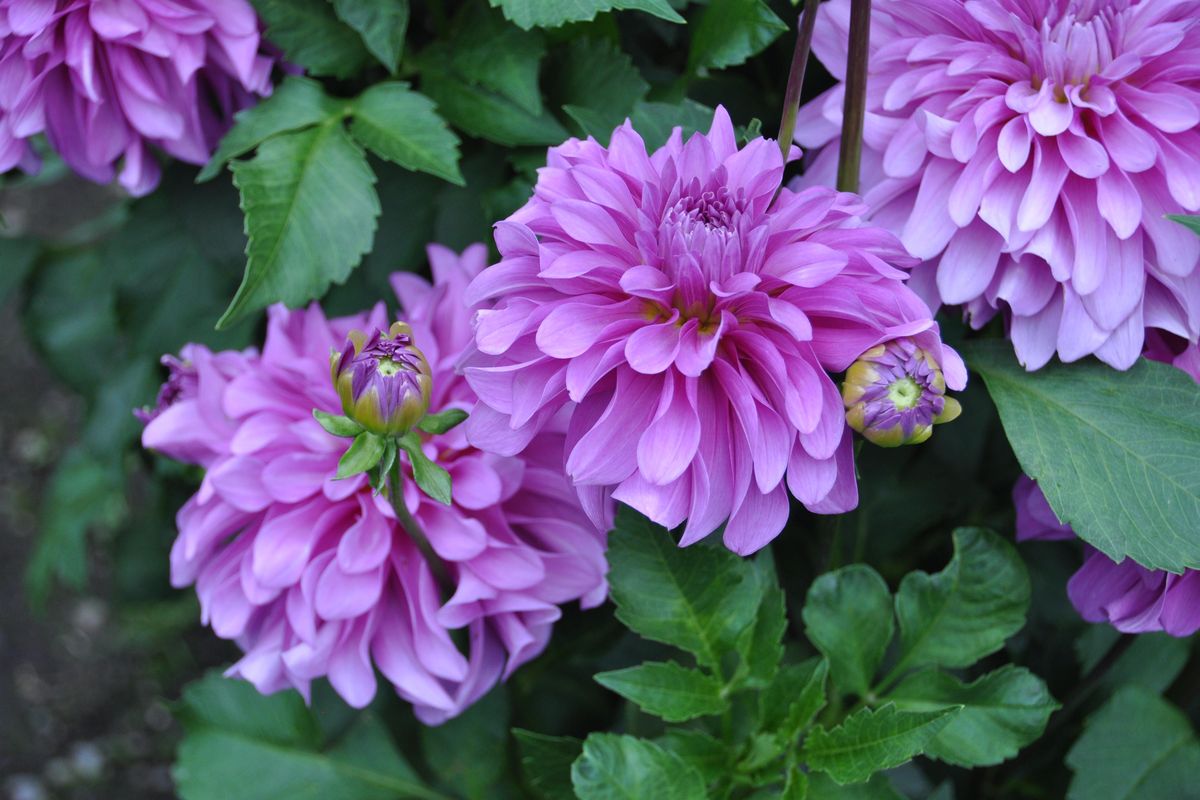Gardening: It’s dahlia time, but saving them for next season takes care, Spokane Valley gardener says

It’s Dan Loibl’s favorite time of year. His Spokane Valley garden is ablaze with the reds, yellows, pinks, purple and whites of his 100 or so dahlias that are finally blooming.
“My mother-in-law used to bring busloads of her friends from the retirement center every year just to see the flowers,” Loibl said, as he led a group of WSU Master Gardeners through the garden just before the Labor Day holiday.
Dahlias are one of the best late-summer cut flowers. A few stems can fill a vase and brighten a room with a big splash of color for a week or more. They were late coming out this year though.
“The ground was cool in June, and they were slow to come up,” Loibl said. “I dug up a few to see if they were still alive. They like it hot.”
Dahlias are native to the much warmer climate of Mexico. As pretty as the flowers are now, the plants will quickly turn into blackened mush at the first frost. Then, Loibl will call in his friends to help prepare the tubers for winter.
Loibl will leave the tubers in the ground for a week to rest when the frost hits before gently digging them up. Starting at least a foot out from the plant stem, dig around the plant and gently work the clump of tubers out of the ground, being careful not to break them apart. Brush the loose dirt off the clumps and set them in a warm, sunny place to dry for a few hours. With a permanent felt marker, write the name of the variety right on the tubers. Tags are easy to lose.
To prepare the tubers for storage, locate the pink growth bud near the stem on each tuber. Carefully cut the tubers apart so there is a growing bud on each tuber. Save the largest tubers, as they have the most energy stored up for next year. At this point, you can dust them with a fungicide to reduce the potential of disease during storage.
Loibl has experimented with many ways to wrap and store his dahlias and has settled on wrapping each tuber loosely with plastic wrap and then loosely packing them into coolers without anything else before storing them in a shed that doesn’t freeze. The tubers need to be kept between 40 and 50 degrees; if it’s too warm, they sprout, if it’s too cold they can freeze.
“My old rabbit house is perfect, but you can use a very cool basement room or up against the house wall in a garage,” he said.
If you use the garage, bring them in when the weather gets exceptionally cold. Some people even use covered window wells to store their tubers. During the winter, check the tubers periodically for rot and remove spoiled ones. If the tubers look dry, lightly mist them with water to rehydrate them.
What’s Loibl’ s favorite dahlia? “Bluetiful!” he says enthusiastically.
I don’t know how he can choose.